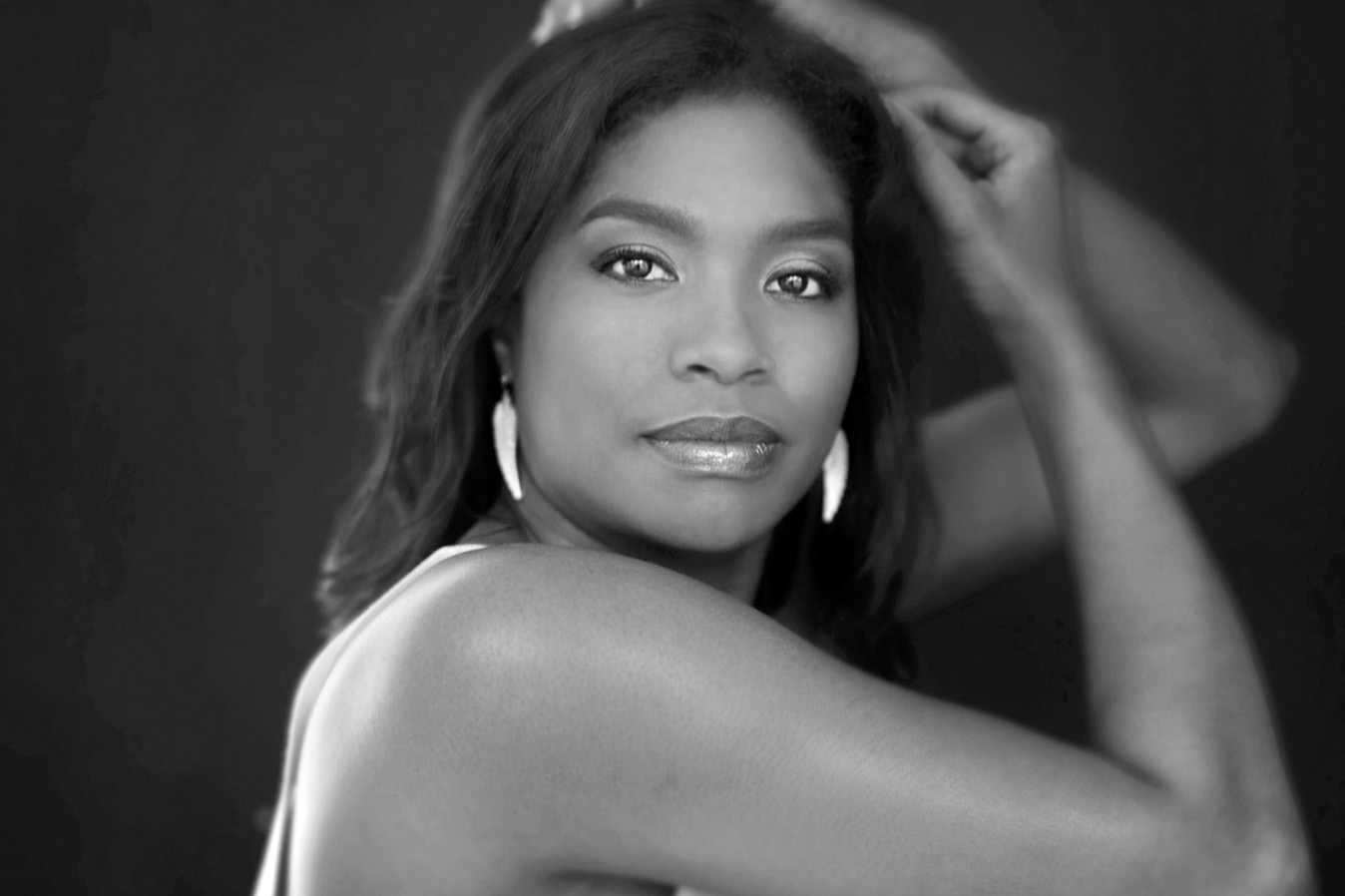Breast Cancer Surgery and Reconstruction
Breast Cancer Surgery and Reconstruction
Whats Right for You
Patricia Anstett
with photography by Kathleen Galligan
ROWMAN & LITTLEFIELD
Lanham Boulder New York London
Published by Rowman & Littlefield
A wholly owned subsidiary of The Rowman & Littlefield Publishing Group, Inc.
4501 Forbes Boulevard, Suite 200, Lanham, Maryland 20706
www.rowman.com
Unit A, Whitacre Mews, 26-34 Stannary Street, London SE11 4AB
Copyright 2016 by Rowman & Littlefield
All rights reserved. No part of this book may be reproduced in any form or by any electronic or mechanical means, including information storage and retrieval systems, without written permission from the publisher, except by a reviewer who may quote passages in a review.
British Library Cataloguing in Publication Information Available
Library of Congress Cataloging-in-Publication Data Available
ISBN: 978-1-4422-4262-3 (cloth : alk. paper)
eISBN: 978-1-4422-4263-0 (electronic)
 The paper used in this publication meets the minimum requirements of American National Standard for Information SciencesPermanence of Paper for Printed Library Materials, ANSI/NISO Z39.48-1992.
The paper used in this publication meets the minimum requirements of American National Standard for Information SciencesPermanence of Paper for Printed Library Materials, ANSI/NISO Z39.48-1992.
Printed in the United States of America
Contents
Acknowledgments
Patricia Anstett: This book could not have been done without: Donna Dauphinais, a friend who inspired this book with an invite to watch her nipple tattoo appointment; Canice Johnson, my high school writing teacher and mentor who died of breast cancer in May 2015; 240 donors who helped raise money for reporting and photography trips for the book; and my husband, Tim, and my children, Caitlin, Amy, and Eric, for whom I am eternally grateful for their love and support.
Kathleen Galligan: I express gratitude to the late Dawn Bhateley, an army friend who convinced me to tell my story; Bhateley died of breast cancer in September 2015; niece Erin Gallagher, photographer of my photo; Michelle Michalak, makeup and hair stylist; Seide Huschen, and Chris and Virginia Columbo of Columbo Scuba Adventures; Rachel Hessler, of Biker Bobs Harley-Davidson who loaned us her motorcycle for a photo session; to other women in this book who befriended me and supported me throughout my breast cancer treatment; and especially to my brother, John, and sister, Anne, who are always there for me.
Introduction
A modern era of breast cancer surgery and reconstruction has brought choices like never before for American women undergoing surgery to treat or prevent breast cancer.
But most dont emerge with new breasts and nipples in a single operation. It may take a year, even much longer, to finish the work, and complications can occur at any step along the way. Some never complete breast reconstruction, living without nipples or with breasts that dont match.
A growing trend toward double mastectomy and breast reconstruction in the United States, which raises concerns among many cancer experts, also threatens to overturn twenty-five years of public awareness about the success of lumpectomy and radiation for treating most early-stage breast cancers.
Breast Cancer Surgery and Reconstruction: Whats Right for You reframes the important discussion about lumpectomy, mastectomy, and breast reconstruction around the women who have had these operations. It offers womens unique viewpoints about the less discussed but essential part of breast cancer: the surgery nearly every woman has, regardless of whether she has reconstruction or not.
Modern Breast Surgery and Reconstruction
Cheryl Perkins was thirty-five, nursing her fourth child, when she found out she had breast cancer.
Cheryl Perkins was just thirty-five, nursing her fourth child, when she found out she had breast cancer. She had three other young daughters and a full-time job as a registered nurse in Detroit.
Her obstetrician assured her the lump she found probably was a clogged milk duct, but Perkins persisted and got a mammogram. The test found an aggressive tumor that had spread under her armpit. It was a stage 2, triple-negative breast cancer, a type of tumor that doesnt respond well to standard chemotherapies because it lacks cell receptors that drugs target for estrogen and progesterone hormones and a protein called HER2/neu.
For reasons not yet understood, triple-negative tumors are more common in women who are young, black, or who carry mutations for two known BRCA1 and BRCA2 genes.
Perkins had a life to get on with and fears to put at rest as best as she could. She asked her hairdresser to trim her shoulder-length hair to a short, Halle Berry cut and told her kids, Im going to fight this. She had a double mastectomy with immediate reconstruction with saline implants, a decision she made quickly, with her gut instincts, even though shes a registered nurse.
When I found out I had cancer on the right side I wanted to eliminate the risk it would happen on the left, she recalled. I wanted to feel a little more at ease, to have some kind of peace of mind. I wanted to be sure it didnt come back.
In a new era of breast cancer surgery and reconstruction, young and middle-aged women like Perkins with breast cancer, as well as women with gene mutations that greatly raise their risk of getting breast cancer, are changing the discussion as never before.
Some bring surgery preferences, including double mastectomy; more aggressive styles of selecting physicians; and other issues, from fertility to hormone replacement therapy, that are likely to have a profound influence for years on breast cancer surgery and reconstruction in the United States.
Though breast cancer remains largely a disease of aging, with the risk of getting it increasing as a woman gets older, the demographics of women undergoing surgery and reconstruction have changed drastically in just the last few years.
An announcement in 2013 by actress Angelina Jolie that she underwent preventive nipple-sparing double mastectomy with silicone reconstruction only heightened public awareness and interest in genetic counseling and preventive surgeries, particularly among young women, even teenagers. Cancer centers called it the Angelina effect; some women even asked to be tested for the Angelina gene.
The same year of Jolies surgery, Kelly Rothe became one of the youngest known women in the United States to have preventive surgery. Rothe, twenty, a college junior at the time, had to convince her breast surgeon she was mature enough to understand the implications of her decision to have a double mastectomy.
Emmy Pontz-Rickert was twenty-four when she had a double mastectomy and chemotherapy for an aggressive tumor. She gave birth to her first child, Grace, in 2015. She regrets being unable to breastfeed her daughter but is thrilled to be a mother, particularly given what she went through just two years earlier.
Sara Erzen was thirty-five, pregnant with her third child, when she found a lump in her breast that was cancerous. She completed her surgery and reconstruction only to develop an infection in the expander phase of the procedure. She lives one-breasted. For now, reconstruction isnt important.
These days, entire families make surgery decisions together, like Alejandra Rojas, sixty-three, of Santa Ana, California, and three of her four daughters, ages twenty-nine to thirty-five, who carry BRCA1 gene mutations. They and others travel to national meetings of women with hereditary syndromes to hear top cancer surgeons. Or they schedule procedures at out-of-town medical destinations catering to women looking for the best.
Next page
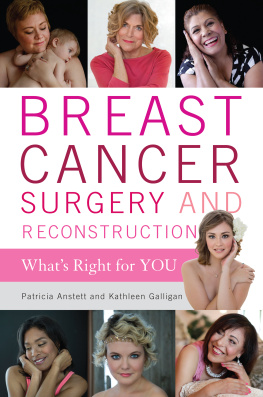
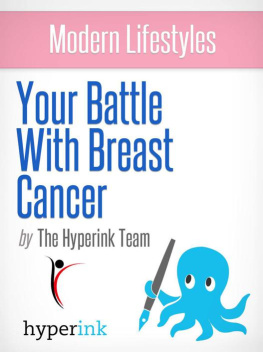

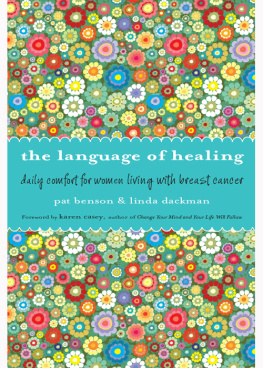


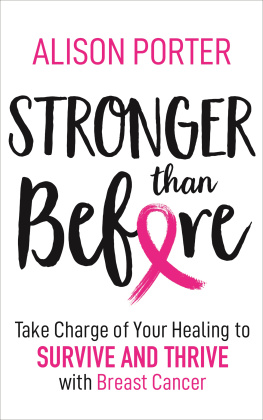
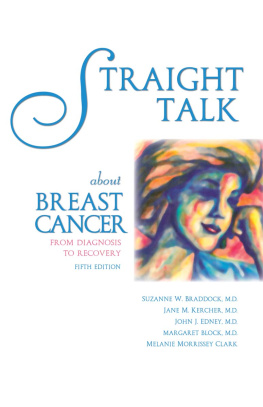

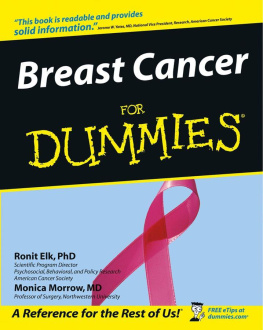
 The paper used in this publication meets the minimum requirements of American National Standard for Information SciencesPermanence of Paper for Printed Library Materials, ANSI/NISO Z39.48-1992.
The paper used in this publication meets the minimum requirements of American National Standard for Information SciencesPermanence of Paper for Printed Library Materials, ANSI/NISO Z39.48-1992.